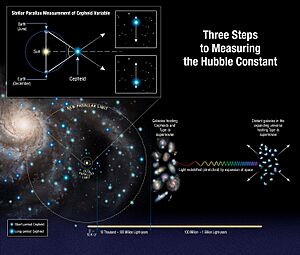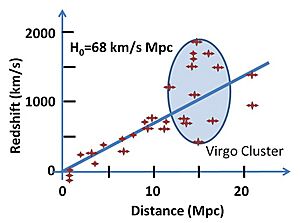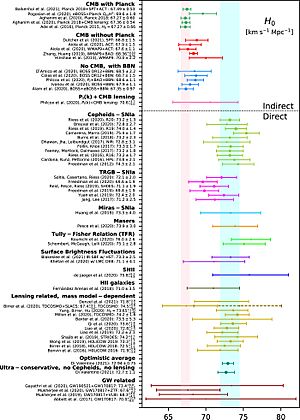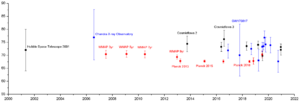Hubble's law facts for kids
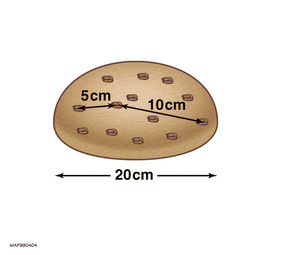
Hubble's law, also known as the Hubble–Lemaître law, is a key idea in physical cosmology. It tells us that galaxies are moving away from Earth. The farther a galaxy is, the faster it seems to be moving away. Scientists figure out how fast galaxies are moving by looking at their redshift. Redshift is when the light from a galaxy shifts towards the red end of the visible spectrum, like a siren's pitch changing as it moves away.
Hubble's law was the first observation that showed the universe is expanding. Today, it's one of the main pieces of evidence supporting the Big Bang theory. The movement of objects caused by this expansion is called the Hubble flow.
This law can be written as a simple equation: v = H0D. Here, v is the speed a galaxy is moving away, D is its distance from us, and H0 is a special number called the Hubble constant. This constant tells us how fast the universe is expanding right now. Its value is usually around 70 (km/s)/Mpc. This means a galaxy 1 megaparsec (about 3.26 million light-years) away moves at about 70 km per s.
Even though it's named after Edwin Hubble, the idea of an expanding universe with a measurable speed was first explored by others. Alexander Friedmann used general relativity equations in 1922 to show the universe might be expanding. Then, Georges Lemaître in 1927 independently found the same idea. He also noticed that galaxies' speeds were proportional to their distance and suggested a value for the constant. Edwin Hubble later confirmed this expansion and found a more accurate value for the constant in 1929. The speeds of these objects were first measured by Vesto Slipher in 1917, who noticed their redshifts. The Hubble constant H0 is constant at any given moment, but the overall Hubble parameter H changes over time.
Contents
How Was It Discovered?
Edwin Hubble did most of his important work at Mount Wilson Observatory. This observatory had the most powerful telescope of its time. Hubble used it to study special stars called Cepheid variables in "spiral nebulae." These stars helped him figure out how far away these objects were.
To his surprise, these "nebulae" were very far away, much farther than our own Milky Way galaxy. People slowly started calling them "galaxies" instead of "nebulae."
Hubble combined his measurements of galaxy distances with redshift measurements from Vesto Slipher and Milton Humason. He found that there was a rough connection between how far away a galaxy was and how much its light was redshifted. This meant that farther galaxies were moving away faster.
Hubble created a graph called a "Hubble diagram." On this graph, he plotted the speed of an object (based on its redshift) against its distance from Earth. A straight line going upwards on this graph showed Hubble's law in action. His first value for the Hubble constant was 500 (km/s)/Mpc. This was much higher than what we know today, because his distance measurements had some errors.
Measuring the Hubble Constant Today
Scientists today are still working to measure the Hubble constant as precisely as possible. They use advanced tools like the Planck mission and the Hubble Space Telescope.
For example, measurements from the Planck mission in 2018 suggested a value of about 67.7 (km/s)/Mpc. But in 2019, using the Hubble Space Telescope, scientists found a higher value of about 74.0 (km/s)/Mpc.
These two main measurements don't quite agree, which is a big puzzle for astronomers! This disagreement is called the "Hubble tension." Scientists are actively researching why these values are different. It might mean we need to learn more about how the universe works. They use many different methods, like studying supernovae (exploding stars) or gravitational lensing (when gravity bends light). Each method helps them get closer to the true value of the Hubble constant.
Images for kids
Related pages
See also
 In Spanish: Ley de Hubble-Lemaître para niños
In Spanish: Ley de Hubble-Lemaître para niños


